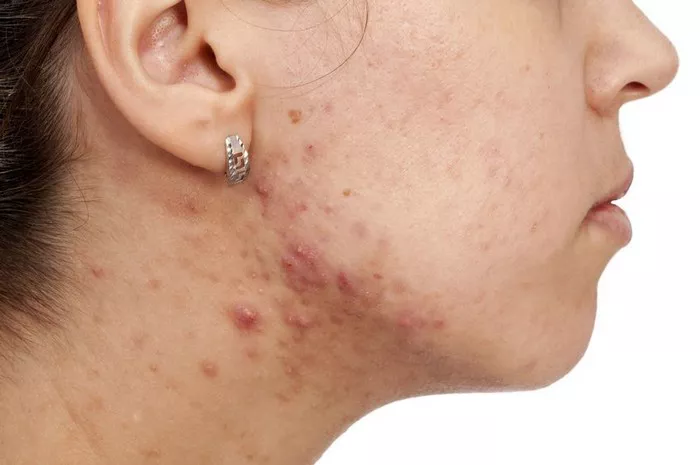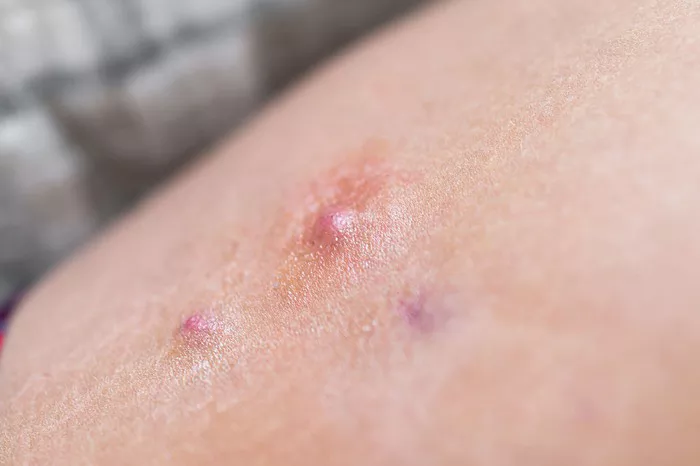Skin conditions can often be confusing, especially when symptoms overlap or appear similar. Ringworm, a fungal infection, and pimples, typically associated with acne, are two common dermatological issues that can sometimes be mistaken for one another or thought to be related. However, it’s essential to understand the distinct causes, symptoms, and treatments for each to effectively manage these conditions. In this article, we delve into the question: Does ringworm cause pimples?
What is Ringworm?
Contrary to its name, ringworm is not caused by a worm but is a fungal infection of the skin. The name comes from the characteristic ring-shaped rash that can develop. The fungus responsible for ringworm belongs to a group called dermatophytes and can affect different parts of the body, including the scalp (tinea capitis), body (tinea corporis), feet (athlete’s foot or tinea pedis), and groin (jock itch or tinea cruris).
Ringworm typically appears as a red, scaly rash that may be raised at the edges and often clears up in the center, creating a ring-like appearance. It can be itchy or painful and is highly contagious, spreading through direct contact with an infected person or animal, or by touching contaminated items like towels, clothing, or surfaces.
Understanding Pimples
Pimples, on the other hand, are a common skin condition associated with acne. Acne occurs when hair follicles become clogged with oil and dead skin cells. This blockage can lead to the growth of bacteria, particularly Propionibacterium acnes (P. acnes), causing inflammation and the formation of pimples. Pimples can vary in appearance from small blackheads and whiteheads to more inflamed lesions like papules, pustules, nodules, or cysts.
Acne is influenced by hormonal changes, genetics, stress, and certain medications. It commonly affects areas with a high density of oil glands, such as the face, chest, back, and shoulders. While acne is most prevalent during adolescence, it can persist into adulthood and may require different treatments depending on its severity.
Differentiating Between Ringworm and Pimples
Although ringworm and pimples can both affect the skin, they have distinct characteristics that help differentiate them:
1. Appearance: Ringworm often presents as a circular or ring-shaped rash with raised edges and a clearer center. It may be scaly, red, and itchy. Pimples, on the other hand, are usually raised lesions that can be white, black, or red, depending on their type and severity.
2. Location: Ringworm can occur anywhere on the body and is more likely to be found on skin surfaces. Pimples, particularly acne, commonly affect the face, chest, back, and shoulders.
3. Symptoms: Ringworm is typically itchy, while pimples can be tender or painful, especially when inflamed.
4. Contagiousness: Ringworm is highly contagious and can spread through direct contact or by sharing contaminated items. Pimples are not contagious but can worsen with poor hygiene or certain skin-care practices.
Can Ringworm Cause Pimples?
The relationship between ringworm and pimples is indirect. Ringworm does not directly cause pimples, but their presence in the same area or overlapping symptoms can create confusion. In some cases, scratching ringworm lesions can lead to irritation or inflammation of the skin, potentially triggering acne or worsening existing acne.
Moreover, the treatment for ringworm, which often involves antifungal medications, can sometimes cause skin dryness or irritation. This irritation may contribute to conditions that resemble acne, such as folliculitis (inflammation of hair follicles) or contact dermatitis. However, these are separate conditions and not caused by the ringworm fungus itself.
Seeking Professional Diagnosis and Treatment
If you suspect you have either ringworm or acne (or both), it’s crucial to seek professional medical advice for an accurate diagnosis and appropriate treatment. Dermatologists are trained to differentiate between various skin conditions and can recommend the most effective therapies.
For ringworm, treatment typically involves antifungal creams, lotions, or oral medications. Topical treatments for acne may include benzoyl peroxide, salicylic acid, retinoids, or antibiotics, depending on the severity. It’s essential to follow your dermatologist’s recommendations closely to achieve the best results and minimize the risk of complications or recurrence.
Conclusion
In conclusion, ringworm and pimples are distinct skin conditions with different causes, symptoms, and treatments. While ringworm is a fungal infection characterized by a ring-shaped rash, pimples are inflammatory lesions associated with acne. Ringworm does not directly cause pimples, but both conditions can occur simultaneously or in close proximity, leading to confusion.
Understanding the differences between ringworm and pimples is essential for accurate diagnosis and appropriate treatment. If you have concerns about your skin or notice unusual symptoms, consult a dermatologist promptly. With proper care and professional guidance, you can effectively manage these conditions and maintain healthy skin.
Related Topics:


























